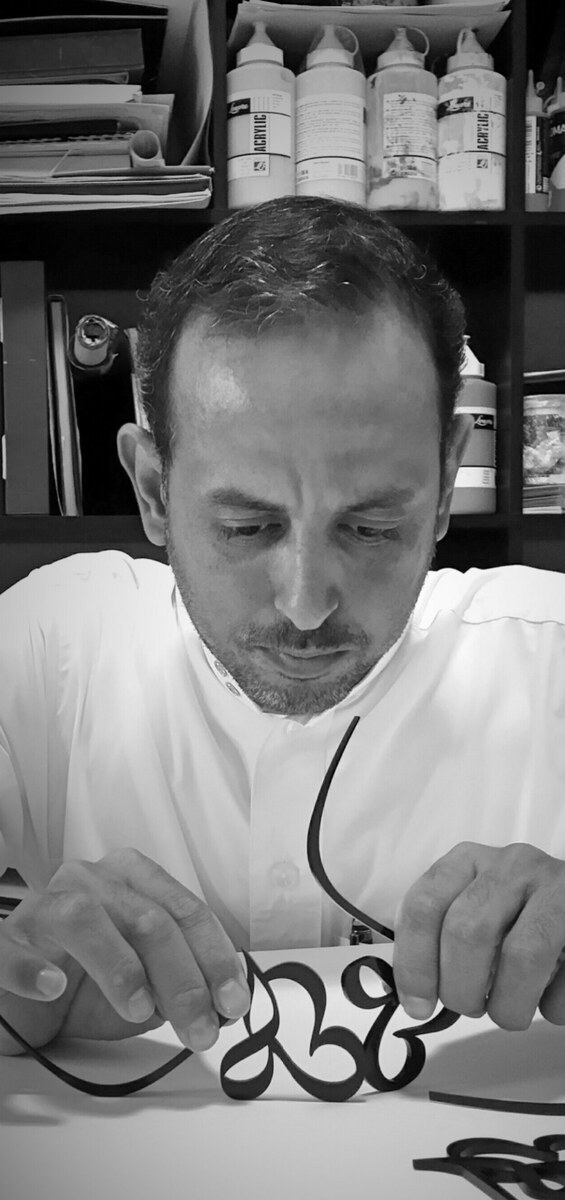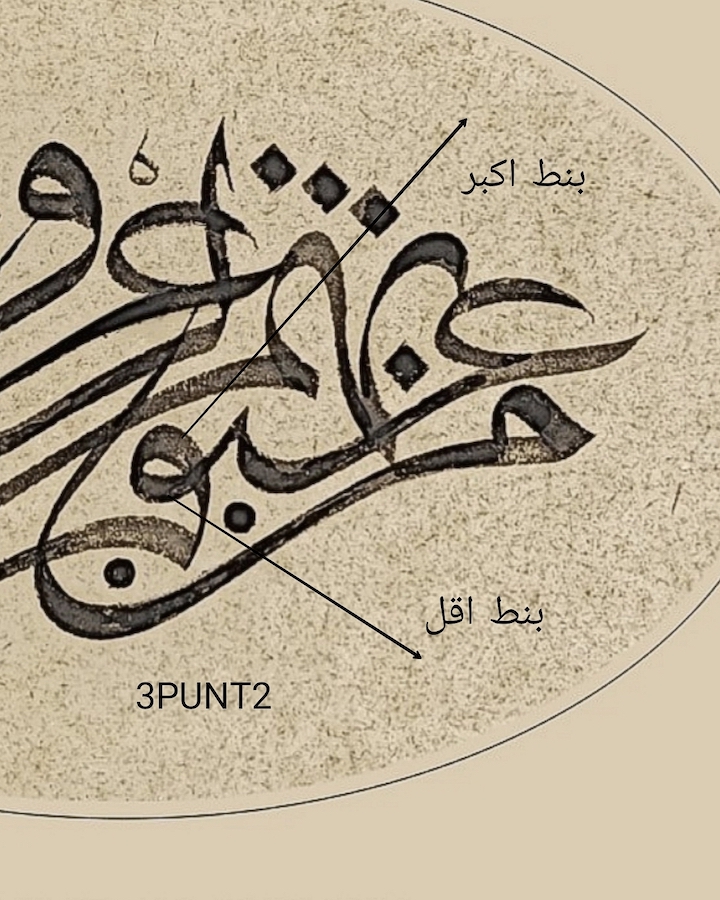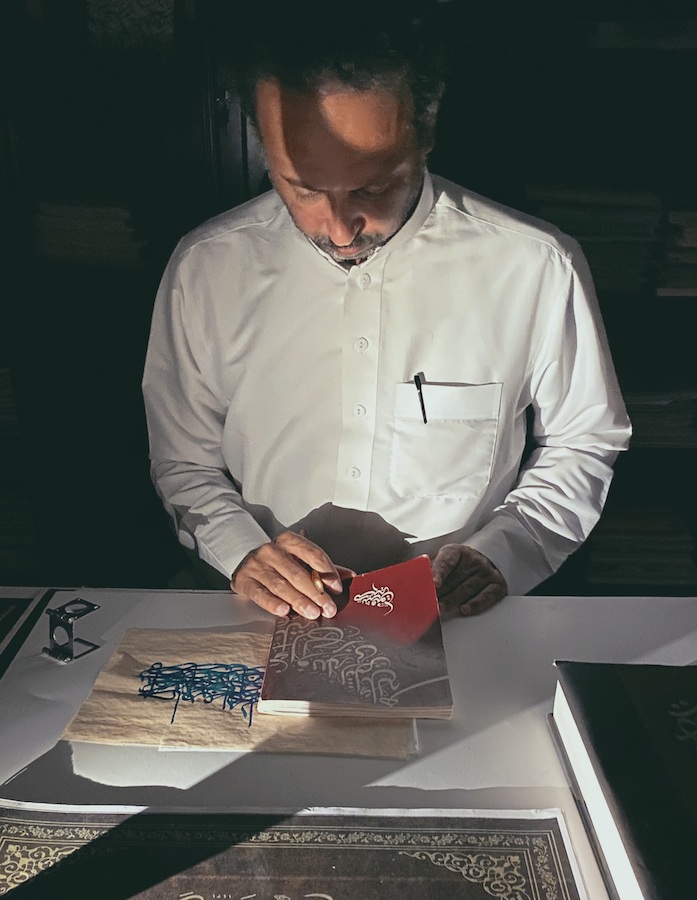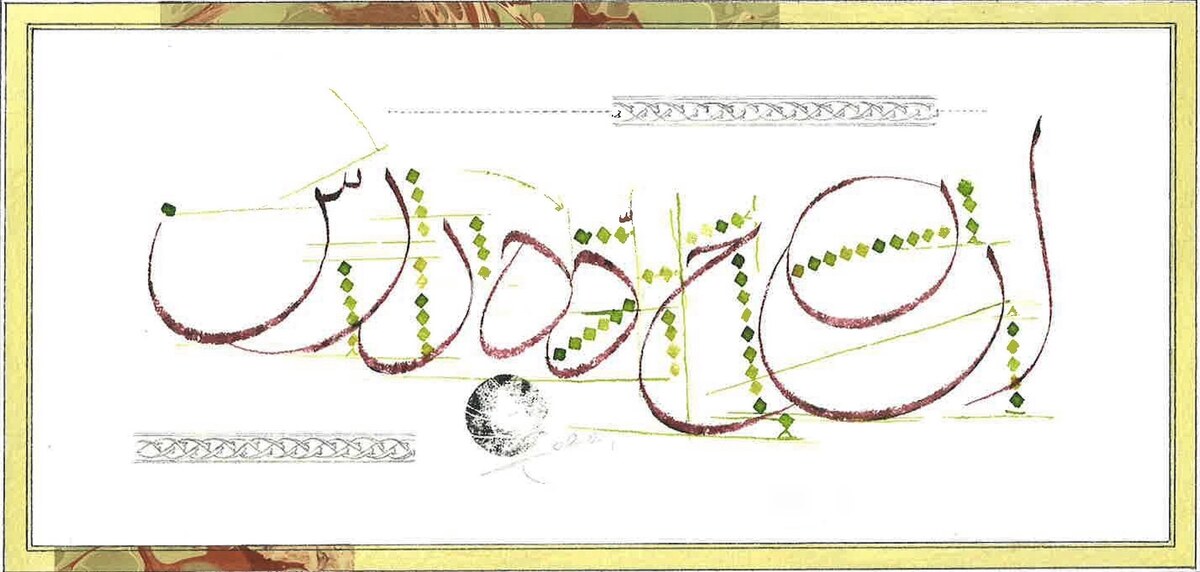RIYADH: Raed Alsemari on Thursday night became the first Saudi film director honored with the premier of a locally-made movie in his home country.
An audience of more than 200 people watched his short comedy, “Dunya’s Day,” on the IMAX screen at the Vox Cinema at Riyadh Park during an invitation-only event organized by the General Culture Authority, represented by the Saudi Film Council.
In addition to a Saudi director, the film has an all-Saudi, all-female cast, was shot on location in the Kingdom and will shortly become the first Saudi film shown at the renowned Sundance Film Festival.
The film tells the story of Dunya as she struggles to organize an important party after her household staff fail to show up to help.
Alsemari, a post-graduate student of film at New York University, welcomed the audience before the screening, making sure to let them know that they were “allowed to laugh” — and laugh they did. The film entertained a delighted crowd who rewarded the director with a hearty round of applause as as the credits rolled.
After the screening, Alsemari thanked his family, friends and the cast and crew. He revealed that most of those involved in the production were volunteers working an a film for the first time.
“We were like a family on set,” he added.
The main cast includes Sarah Balghonaim as Dunya, and Sarah Altaweel and Rahaf as Dalal and Deema, her best friends. Balghonaim joined the project to help with casting, but when Alsemari was unable to find an actor he liked for the title character, he asked Balghonaim to take the role.
By making a film with an all-female cast, Alsemari and the actors were keen to highlight the fact that Saudi women have stories that deserve to be told, and that films need not be driven by male characters. Inspired by classic Hollywood movies such as “Mean Girls” and “Heathers,” Alsemari wanted to put his own, Saudi twist on those stories.
“I wanted to tell a story about an Arab woman who was neither a victim nor a saint,” he said. “She’s in a position of power in the narrative. That was important for us.”
To prepare for the film, the actors immersed themselves in their roles.
“We even referred to each other by our character names during the shoot,” said Altaweel. “We were completely into it.”
All three stars were generous in their praise of Alsemari, particularly his skill as a director.
“It’s such a blessing working with a director who knows exactly what he wants, and knows the characters perfectly, especially for a first-time film actress,” said Rahaf. “He understood us, he understood our needs and he was always careful to involve us in every step of the process.”
Faisal Baltyuor, the CEO of the Saudi Film Council, highlighted the organization’s desire to support local projects such as “Dunya’s Day,” and encouraged would-be Saudi filmmakers to take the first step toward realizing their visions.
“We have so many stories to tell, from every small town to every coast in the country,” he said. “Do not hesitate. Start on your next film and let us help you.”
While they were enjoying the premiere of their film, the cast and crew also still seemed to be in shock after the recent announcement that it will be screened at Sundance Festival, which begins on January 24 in Utah.
“It still hasn’t sunk in fully yet,” said Alsemari, “but it feels incredible. I’m so excited to make it out there.”
“I’m so proud of the entire team,” said Balghonaim. “I’m especially proud that the first Saudi Sundance film features an all-female cast.”
“It has to be said, however, that the experience itself was rewarding enough; the Sundance thing is just a bonus,” said Rahaf. “I know everyone says stuff like that but that’s what I honestly feel.”
In the midst of all the excitement, Alsemari is already thinking about what to do next and hopes that next time he’s back to screen a film in Saudi Arabia, it will be a full-length feature.
“I’m working on graduating now, but who knows?” he added.
Cast and crew’s delight as Dunya’s Day becomes first Saudi film to premiere in Kingdom
Cast and crew’s delight as Dunya’s Day becomes first Saudi film to premiere in Kingdom

- The film tells the story of Dunya as she struggles to organize an important party after her household staff fail to show up to help
From struggles to innovation: How Saudi calligrapher Abdulaziz Al-Rashedi revolutionized Arabic script

- ‘I feel there is a holy light within the letters,’ says Abdulaziz Al-Rashedi
DUBAI: Saudi calligrapher and arts instructor Abdulaziz Al-Rashedi’s first love was the pen. His fascination with writing began in elementary school in the Eighties in his hometown of Madinah.
Al-Rashedi talks about holding a pen in the same way a musician might discuss holding their instrument. In the eyes of the calligrapher, writing is an artistic act, like a dance, that has its own kind of magic.
“What I loved about the pen was the way the ink was flowing out of it,” he tells Arab News. “The pen led me to my love of writing Arabic calligraphy.”

But there were challenges imposed by the conservative social environment of the Kingdom in the Eighties and Nineties.
“People didn’t regard art as something important. During that time, people thought that art couldn’t generate money. For them, it was a waste of time,” he says. “In such a depressing environment, I was suffering from people’s lack of interest. They were saying that the writing would distract me from my studies. But actually, it encouraged me to study.”
Not everyone disregarded his interest in pursuing calligraphy, however. Al-Rashedi’s late father was always a supporter.

“He was a believer in writing, and conserving it,” Al-Rashedi says. “He thought I was doing something important with my life, even though others thought it wasn’t important. They likened it to making scribbles. I was literally making art on my own. None of my friends shared this interest with me and there were no calligraphy institutes to encourage this talent. The situation was very difficult.”
But in 1993, Al-Rashedi learned there was, in fact, a master Saudi calligrapher living in Madinah: Ahmad Dia. He kindly agreed to teach Al-Rashedi the basics of Arabic calligraphy. And, perhaps just as importantly, to do so in his home, which Al-Rashedi compares to a school and a museum, as well as a meeting place for calligraphers.
“I was young, but he treated me like a man,” the artist recalls. “For us calligraphers, he was like a spiritual father figure, who planted a seed of determination in us. He always encouraged us and never told us off if our writing wasn’t on point.”

Al-Rashedi remained in contact with his tutor until Dia’s death in 2022 during the COVID pandemic. “When he died, it felt as if the light went off,” Al-Rashedi says.
Al-Rashedi also trained himself by copying the work of another important figure: Hashem Al-Baghdadi, the influential Iraqi calligrapher and educator who published books on the rules of Arabic calligraphy. Al-Rashedi describes the pre-social media era as a “truly dark period” when there were no opportunities to host exhibitions or share his work with others.
“People weren’t communicating with each other. It was a period that lacked (opportunity) and even good materials, such as pens and paper,” he recalls.
But with the advent of social media, most notably Facebook, and the opening of a few art galleries, including Jeddah’s Athr Gallery in 2009, things improved drastically. Today, Al-Rashedi is able to share his work on Instagram and other platforms, displaying the skills he has honed over three decades of practice.

Arabic calligraphy is an internationally respected art form that has existed for thousands of years, exercised in Islamic texts and found on monuments around the world. So, what is its long-lasting secret?
“I often ask myself why the curves of Arabic calligraphy have bewitched people for so long, and I believe it inevitably has something to do with its holiness,” he says. “Allah has been an inspiration for calligraphers and their innovation of writing. I feel there is a holy light within the letters of Arabic calligraphy.”
But Al-Rashedi also believes that, for many years, calligraphy has been stuck in a rut, untouched by modern innovation or creativity.

“Many calligraphers have literally said that Arabic calligraphy has reached its end and no one could add anything new to it,” he says. “Such an idea is incorrect.”
Indeed, Al-Rashedi has invented his own form of Arabic calligraphy, which he calls “3punt.” (He says the name refers to the size of the letters, which are written using three different pens.)
“It depends on the idea of lessening the thickness of the letter. Usually, one pen is used in Arabic calligraphy. But I discovered that the original bulkiness of Arabic scripture and the usage of just one pen prevents Arabic calligraphy from having new forms of writing being added to its system.”
Based on a strict set of rules, Al-Rashedi’s 3punt calligraphy contains 55 “subtypes of writing,” he says. It has its own lightness and elegance, with carefully choreographed flowing lines of slender Arabic script.
Ultimately, Al-Rashedi believes that Arabic calligraphy is about connections.
“If we look at Latin or Chinese scripture, on letters like ‘n,’ ‘e,’ or ‘r,’ they are based on separate components. But with Arabic calligraphy, you can connect six or seven letters in one go,” he says. “Without a doubt, Arabic writing — as an art form — is superior to other types of writing.”
US contemporary artist Brendan Murphy discusses his first show in Riyadh

RIYADH: The American contemporary artist Brendan Murphy brought his solo exhibition “Complete Control” to Ahlam Gallery in Riyadh on Nov. 7. The Riyadh show is the conclusion of a global tour that Murphy began in June 2024 at Fineart Oslo.
The show features a number of Murphy’s iconic “Spaceman” sculptures, with a particular focus on his limited-edition collectible series titled “Magication.”
In an interview with Arab News, Murphy said the main goal of his show is to bring people “into the moment.” He also stressed that he felt a “creative cultural resonance” with the Kingdom, where he believes people have shown “an appetite for creative works.”

He said: “I have a lot of stuff I’m working on, but I’m focused on building a foundation in Riyadh right now. This show is not a one-shot deal, I want to be a part of this renaissance (that’s happening in Saudi Arabia) for the next five to 10 years, at least. I want to be a part of it — I want to lead it if I can.”
Murphy’s body of work includes colorful abstract paintings and sculptures of his signature Spacemen, which explore themes of beauty, power, and the human experience.
As a kid, watching astronauts and space shuttle launches played a major role in Murphy’s life and eventually became one of his main artistic inspirations.

“My spacemen have little to do with space travel,” he explained. “They epitomize embracing the unknown — taking that step — more than somebody that literally is flying into darkness.”
Murphy’s Spacemen come in various sizes and forms, including small collectibles and large-scale installations. This versatility allows them to fit into diverse settings, from private collections to public art displays. The sculptures can be found across the world, including a 13-foot Spaceman in Houston’s Minute Maid Park baseball stadium and a 22-foot Spaceman in Oslo.
Murphy hasn’t always been an artist. He was once a professional basketball player in Europe, and then became a Wall Street trader. “I did not make a full pivot into accepting that I was a creative person until I was maybe 29,” he said. Today, he is one of most financially successful contemporary artists in the world.
In 2021, Brendan created his “Boonji Project” — a collection of his artwork as non-fungible tokens — and launched it on the Ethereum blockchain (which uses the cryptocurrency Ether). It became the largest primary NFT sale in history, producing $15.5 million dollars.

His work has proven popular with both serious collectors and celebrities, including the tennis players Novak Djokovic and Serena Williams, as well as US business mogul Warren Buffett.
Inspired by artists including Jean-Michel Basquiat and Jackson Pollock — famed for their use of color — Murphy’s art aims to encourage the viewer to tune into their emotions and discover the unknown.
“I love color as a means of communicating a feeling,” Murphy said. “When I make something and I get it right, my work creates energy and that’s pretty cool. Color is the easiest way of creating energy; different colors connect with different feelings.”
Murphy said his practice, by choice, demands that he step out of his comfort zone. He utilizes non-traditional methods and rare materials including chrome and diamonds to create conceptual pieces. He has become famous for his extravagant works of art, including “Frozen with Desire,” a sculpture of an astronaut encrusted with 6,200 diamonds, priced at $25 million.
“As an artist, you have to be uncomfortable all the time,” he said. “Find comfort in what you can control, then break it and go where you have no idea what you’re doing.”
Mark Strong plays ‘interesting version’ of all-powerful ruler in ‘Dune: Prophecy’

JEDDAH: The latest big-budget sci-fi series takes fans back to the familiar universe of Frank Herbert’s “Dune,” but 10,000 years before the events of the recent movies starring Zendaya and Timothée Chalamet.
The HBO Max show “Dune: Prophecy” — streaming in the Middle East on OSN+ — follows the rise of the shadowy Bene Gesserit sisterhood. British actor Mark Strong takes on the role of Emperor Javicco Corrino, a man who has become ruler of the galaxy at a tumultuous time.
No stranger to playing characters in powerful positions — most recently, he portrayed the ruthless mob boss Carmine Falcone in another HBO series, “Penguin” — Strong claims that his Emperor Corrino is a little different to the usual screen versions of such men.
“I’m playing a very interesting version of the guy in charge,” Strong tells Arab News. “So, he is the emperor of the universe, which is a great part to play as an actor, obviously, but what’s fascinating about him is his vulnerability — the fact that he is managing a fragile peace.
“So, the guy isn’t what I normally am asked to play, which is people with power who know what they’re doing. He’s very unsure of himself. He doesn’t feel like he’s inherited the ability of his father, he feels a bit of an imposter. He’s trying to deal with a world that he’s not in control of. And I love that juxtaposition of a man that’s supposed to be in charge and supposed to know what he’s doing, and actually he’s very unsure of himself.”
For Strong, the success of the current “Dune” movie and TV franchise is down to the source material.
“The base of the whole thing is these amazing novels that people adore. They are incredibly complicated — really rich. A lot of what we know as modern science fiction, whether it’s ‘Star Trek’ or ‘Star Wars’ or whatever, they come from those books,” he said.
“It’s a world that you want to try and have a go at, because nobody’s done it before. The series, obviously, is set before the movies and in a very different world. And it’s great to have a go at something that that is as fresh as this.”
Princess Rajwa attends parliament session in Jordan

DUBAI: Saudi-born Jordanian royal Princess Rajwa Al-Hussein attended a ceremony marking the inauguration of the first ordinary session of the 20th Parliament in Amman on Monday, marking her second public appearance since the birth of her first child this summer.
The royal showed off an elegant black ensemble for the occasion, complete with an oversized belt by Dior and pumps by Chloe. The look was finished off with the Goji Mini Bag in Black by Jill Sander.
Princess Rajwa was photographed alongside Queen Rania, who showed off a red look courtesy of Maison Valentino and Altuzarra.
Princess Rajwa made her first public appearance since the birth of Princess Iman bint Al-Hussein bin Abdullah II at a 2026 FIFA World Cup qualification match in October.
On August 3, 2024, the royal welcomed her first child, Princess Iman, with Crown Prince Hussein bin Abdullah.
At her birth, Jordan’s King Abdullah posted a tribute to his granddaughter on social media. Translated from Arabic, the post read: "I thank God for giving us our first granddaughter Iman bint Hussein. I congratulate beloved Hussein and Rajwa for their newborn.
“We ask God to raise her well and protect her for her parents. You have lit up our family.”
Princess Rajwa, who celebrated her 30th birthday in April, is the daughter of late Saudi businessman Khalid bin Musaed bin Saif bin Abdulaziz Al-Saif, who died in January this year, and his wife, Azza bint Nayef Abdulaziz Ahmad Al-Sudairi.
Flormar seeks to expand Saudi footprint to meet growing demand in beauty market

DUBAI: Skincare and makeup brand Flormar is planning to triple the number of its stores in Saudi Arabia over the next four to five years to meet the demand of a burgeoning and increasingly competitive market.
Established in Milan, Italy, in the late 1950s, the company is now headquartered in Turkiye. Arab News spoke to CEO Matthieu Gomart about why he is so keen to increase the brand’s presence — currently 25 outlets — in the Kingdom.
“The beauty market in the Middle East — and specifically in Saudi Arabia — is quite dynamic,” he explained. “They have double-digit growth, making it one of our most exciting markets.”
Flormar has undergone something of a transformation in recent years, refining its product lines and formulations to appeal to a broader, more discerning audience.

Gomart said the brand’s approach has evolved to focus “on high-quality makeup at affordable prices” that aligned with skincare and ethical beauty trends.
The company’s clean and vegan products, designed to enhance skin health, have been particularly well-received among Saudi consumers, he added, noting an increasing appetite for natural ingredients and skin-friendly formulations.

It is a trend highlighted by panelists at Riyadh’s Hia Hub beauty conference in October. Industry insiders, such as Chalhoub Group president Patrick Chalhoub, told Arab News the under-30 demographic “use skincare products more frequently and are willing to experiment with innovative products, even with brands that are not necessarily very popular.”
With an entire conference dedicated to growing the Kingdom’s skincare market, it is no wonder Flormar has identified it as a target segment.
Gomart said Saudi consumers were also embracing innovations such as “skinification” — adding skincare benefits to makeup products.
To meet this demand, Flormar is adapting its offerings to include sun protection and hydration in its makeup line.
“Saudis have a strong appetite for those nutrients,” he said.
Flormar’s growth includes partnerships with local retailers, distribution through pharmacy chains, and plans to expand its e-commerce footprint.
“We are happy to be contributing to the rise of self-expression in Saudi Arabia,” Gomart added.















